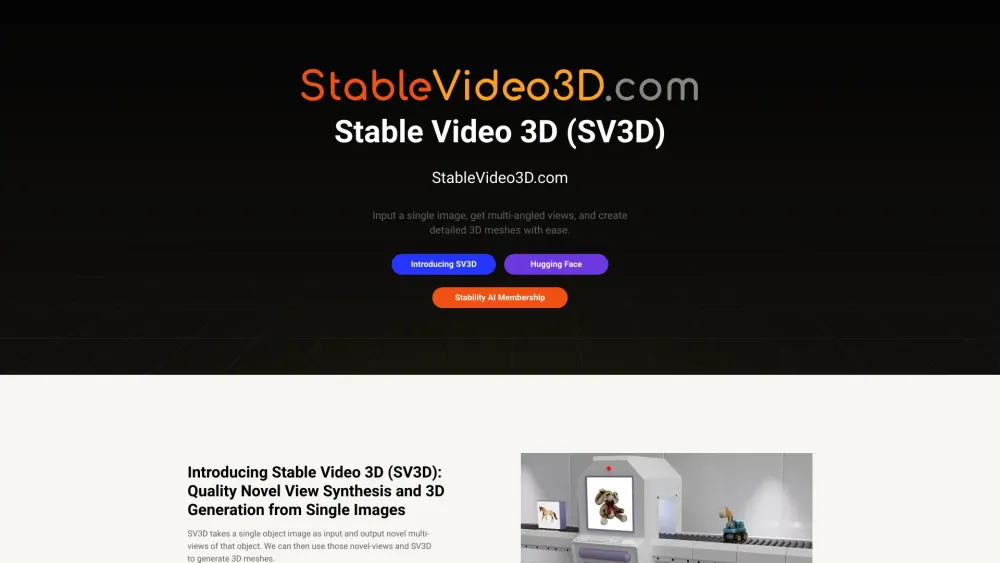FAQ from Stable Video 3D
What is Stable Video 3D?
Stable Video 3D, or SV3D, is a tool that uses advanced generative AI to create 3D visuals and video from single images.
How can I use Stable Video 3D?
Upload an image to produce multi-angled views and detailed 3D meshes, easily achievable with SV3D.
What variants of SV3D are available?
Two options exist: SV3D_u, which enables 3D video without needing specific camera settings, and SV3D_p, which allows users to generate 3D video with customizable camera paths.
Can I use SV3D for commercial work?
Yes, SV3D can be used commercially through a Stability AI Membership, and non-commercial users can download model weights via Hugging Face.
Do I need special training to use SV3D?
While some 3D modeling experience helps, clear usage guidelines are available in the GitHub repository to get started.
What type of images work best with SV3D?
SV3D works best with clear, unobstructed images, as they provide optimal detail for 3D generation.
How does SV3D compare to traditional 3D modeling?
SV3D simplifies 3D model creation from images, making it a faster, automated alternative to manual modeling.
Is SV3D suitable for educational purposes?
Yes, SV3D can be an excellent resource for teaching AI, 3D graphics, and digital content creation.
What system requirements are necessary for SV3D?
A powerful graphics-enabled system is ideal for running SV3D, with detailed requirements available in the documentation.
How precise are the 3D outputs from SV3D?
Output accuracy depends on input image quality and SV3D's training data, generally producing high-quality 3D visuals.
Are there ethical guidelines for using SV3D?
Users should follow ethical guidelines, avoid creating misleading content, and comply with Stability AI’s Acceptable Use Policy.
Where can I find more information on using SV3D?
Visit our GitHub, project page, or follow our community channels for tutorials and additional information.
